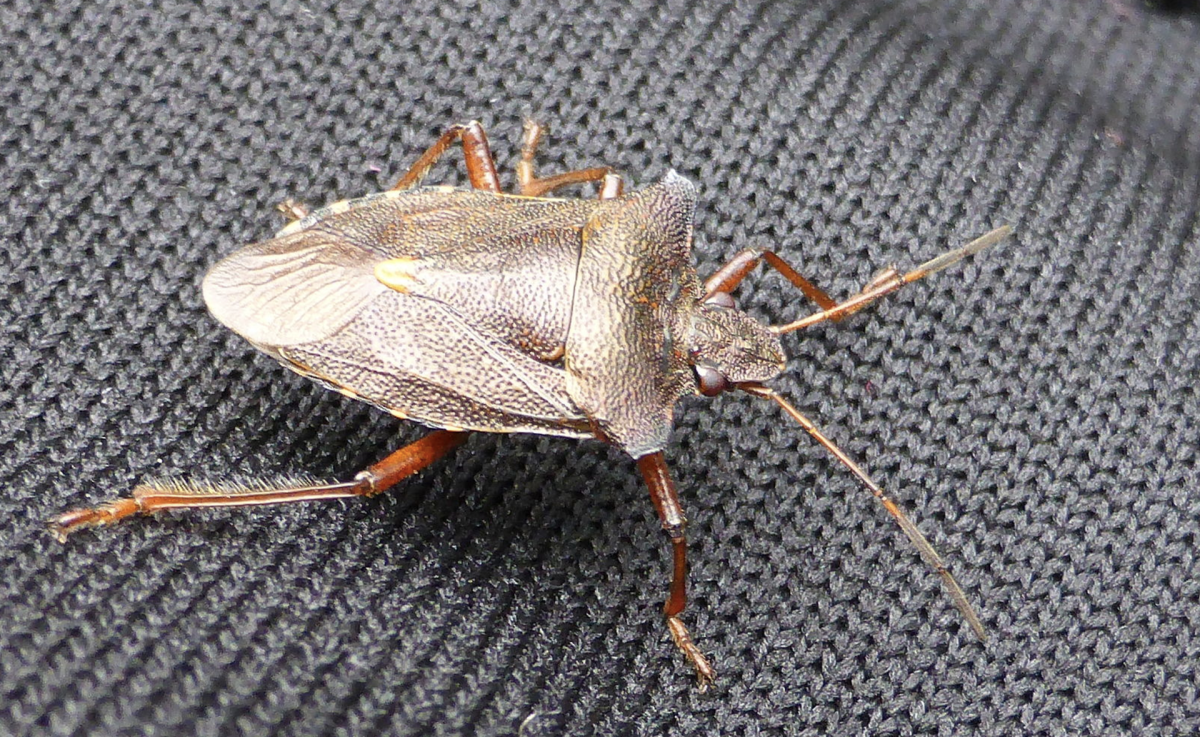It’s fall, and that means migration. Birds are headed south. Chipmunks and squirrels are out in full force, gathering nuts for the winter. As temperatures drop, insects are looking for warm places, like your home, to hunker down.
Some of these bugs – like spiders and centipedes – likely won’t come as a surprise. But others may look new to you.
Take, for example, the brown marmorated stink bug. Measuring about 2 cm in length and about the same width, with a flat, brown abdomen, it is native to Asia, and it’s here in North America because it was accidentally introduced to the U.S. in 1998.
“They were first detected in Ontario in 2010,” Cynthia Scott-Dupree, Ph.D., a professor of sustainable pest management at the University of Guelph, told The Weather Network in 2022.
“It has since become established in Ontario, Quebec, and British Columbia.”
DON’T MISS: Canada’s 2023 Fall Forecast
While we’re focusing on this particular invasive stink bug species, it should be noted that there are a number of native stink bugs present in Ontario. “Some are pests, like the brown marmorated stink bug, and others are what we call beneficial,” Dr. Scott-Dupree said.
The beneficial stink bugs work like a natural biological control, hunting and consuming pest insects. The pest insects, on the other hand, can cause significant damage to crops. More on that later.
Stink bugs aren’t toxic, but they are armed with a defence mechanism that isn’t too hard to figure out, given their name.
When disturbed they release a foul-smelling chemical, but you typically won’t pick it up unless there’s a group of them.
You’ll likely see brown marmorated stink bugs congregating on brick surfaces on warm, autumn days, attempting to absorb some of the heat. They’re also looking for a way to get inside.
If they do find their way indoors, here’s the good news: They aren’t likely to cause any structural damage, and they don’t bite, nor do they sting. But when you zoom out, on a nationwide scale, they come with their fair share of problems.

(Stink bug. Credit: Wikimedia/Public Domain – CC0 1.0/Martin Thoma.)
RELATED: Earwigs in your home? Here’s how to get them out
Damage to agriculture
The marmorated stink bug feeds on about 170 species of plants, namely agricultural crops, posing a risk to farmers. In 2010, they decimated apple crops in the Mid-Atlantic United States, resulting in $37 million (U.S.) in damages.
“Their numbers are increasing,” Dr. Scott-Dupree said. “So far, in Canada, the damage has not been [significant].”
“So far,” is the takeaway here, though. Right now, marmorated stink bugs are reproducing at a rate of about two generations per year. But if the weather continues to get warmer and the seasons get longer, there is potential for a third generation, which means population numbers will steadily increase in the fall.
“They like to attack apple crops when they’re just about ready for harvest,” Dr. Scott-Dupree said.
“So, if we’re getting higher numbers of them as we head into fall, then there’s a bigger potential impact these insects could have in the agricultural sector.”
Efforts to control stink bugs are ongoing, but you can make your home less appealing to them by:
-
Cleaning and vacuuming regularly.
-
Removing crumbs from counters and the floor.
-
Storing food in air-tight containers.
-
Sealing cracks and openings in windows, doors, and walls.
-
Fixing leaky faucets and cracks in your plumbing.
-
Removing moisture with a de-humidifier.
This report was produced by Kevin Clarke.

